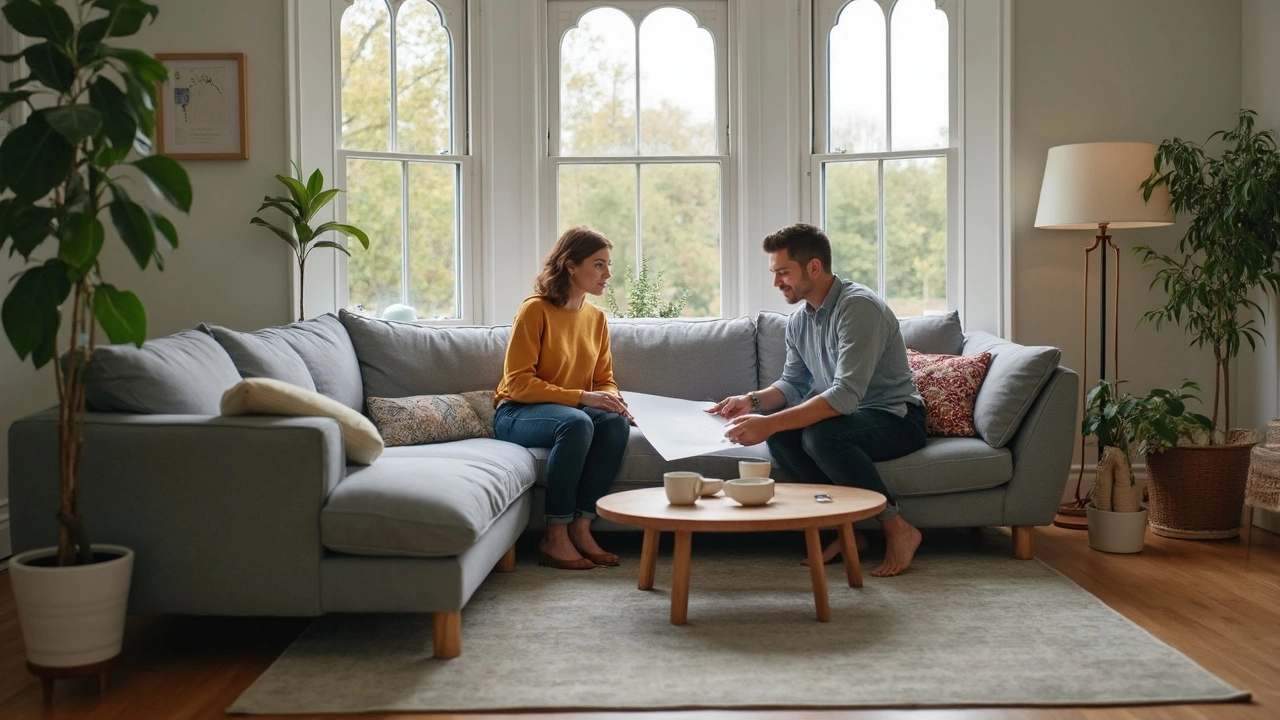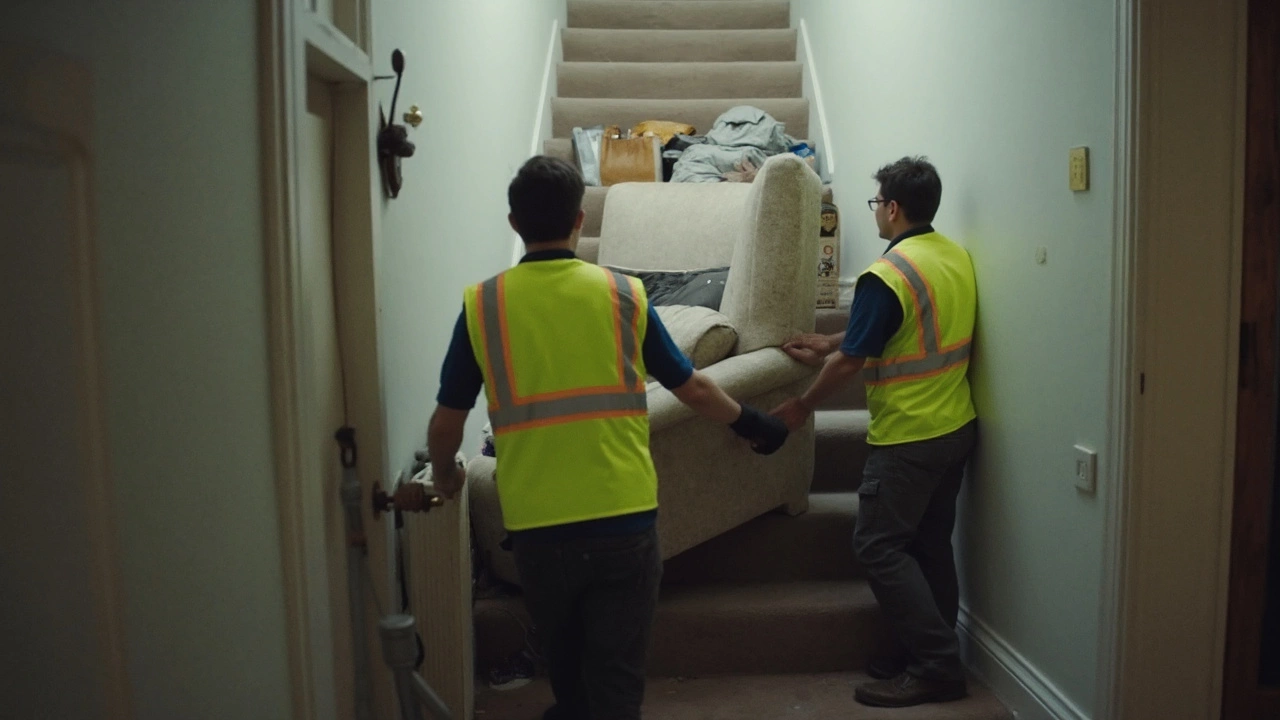 27
May,2025
27
May,2025
Corner sofas get a lot of love for making a room look cozy and stylish, but there's a catch. These chunky couches aren't always a dream come true—especially if you're short on space. I’ve seen friends drag a brand-new corner sofa into their apartment, only to realize they can’t even open the front door all the way. Measure every wall, every corner, and don’t just trust what you see in store photos: real-life rooms aren’t as forgiving as virtual ones.
Another thing that can drive you nuts is rearranging them. These things are usually heavy and come in big awkward sections. If you’re the kind of person who likes to switch up your furniture every season, a corner sofa will just get in the way. And if you want to bring it with you when you move? Get ready for some serious heavy lifting and tight hallway turns.
- Awkward Fit in Small Spaces
- Tough to Move and Rearrange
- Challenging Cleaning and Upkeep
- Comfort: Not for Everyone
Awkward Fit in Small Spaces
A corner sofa might look perfect on a showroom floor, but real living rooms aren’t usually wide open like that. One of the biggest problems with these sofas is they almost always need more space than you expect. Even a small corner sofa can eat up a huge chunk of your room and limit where you can put other furniture. Suddenly, that bookshelf or cabinet you love doesn’t fit in anymore.
Here’s a thing people often miss: the sofa's L-shape really locks you into a certain layout. It only makes sense in one or two spots in a room, and if your walls are broken up with doors, windows, or radiators, you’ll get frustrated fast. And forget about pulling them away from the wall—they always look like they’re floating awkwardly in the middle of the floor.
If you live in an apartment or have a cozy home, be careful with measurements. A lot of corner sofas are at least 200cm by 200cm, which can feel overwhelming in a small place. Here’s a quick look at typical sizes versus common U.S. and UK living room sizes:
| Corner Sofa (Typical Length) | Avg. US Living Room | Avg. UK Living Room |
|---|---|---|
| 220cm x 220cm | 460cm x 610cm | 340cm x 430cm |
| 240cm x 180cm | 460cm x 610cm | 340cm x 430cm |
Notice how a big corner sofa can eat up half the room in many UK homes. That’s a tight squeeze for walking paths and any other furniture you might want.
- Always leave at least 75-90cm of space for walkways behind and around sofas—otherwise, traffic flow gets crazy.
- If you’re working with a small or narrow room, try taping out the footprint of the sofa on your floor before you buy. This can save you the hassle of returning a massive piece you can’t fit through your door.
Bottom line? Corner sofas can look amazing, but if your space is tight, measure everything—not just the spot where you hope it’ll fit, but also every hallway, doorway, and turn along the way. You don’t want to discover too late that the biggest thing in your living room is also your biggest headache.
Tough to Move and Rearrange
If you’ve ever tried to shift a corner sofa from one room to another, you know it’s not just a two-person job. These things are often long, bulky, and have weird angles that make turning corners in hallways a nightmare. Most corner sofas can’t just be picked up and pivoted like a regular couch. You usually have to separate them into big, awkward chunks, and even then, they tend to get stuck on stairs or door frames.
Most major brands stick to a standard setup: you get a left-hand or right-hand configuration, with a main section and a chaise or corner piece. Unfortunately, not all models let you switch that up, so if you move to a new place with a different layout, your sofa might not fit at all. Rearranging your living room for a party or just for a fresh vibe? It’s usually a group mission, and dragging the sections across the floor can wreck wooden floors or snag carpets.
Here’s a look at some real numbers for moving sofas (based on averages for well-known UK and US brands):
| Type | Average Weight (kg/lb) | Average Length (cm/in) |
|---|---|---|
| Standard 3-Seater Sofa | 50 / 110 | 200 / 79 |
| Corner Sofa (3 + 2) | 90 / 198 | 250 / 98 |
If you live in an apartment or a house with tight hallways, measure carefully before buying. And if you’re someone who moves frequently, remember: more sections, bigger pain. Sometimes, you have to disassemble way more than expected, storing screws and small bits so you don’t lose them while wrestling the main pieces through tricky spaces.
Quick tip: Ask the shop or delivery guys if they offer assembly and future relocation services. Some retailers actually do, and it can save your back and a bunch of headaches down the road.

Challenging Cleaning and Upkeep
If you think cleaning a corner sofa is as easy as running a vacuum over it, think again. These sofas might look neat at first, but they easily trap crumbs, pet hair, and dust in hard-to-reach spots—especially in the angle where the two sections meet. If you’ve got kids, pets, or a “snack on the couch” habit, you’ll end up fishing out lost items and vacuuming crevices more often than you’d imagine.
Spot cleaning gets tricky because most corner sofas don’t have fully removable covers. The back sections, especially where two sides meet, can be a nightmare if someone spills a drink or drops greasy food. Even anti-stain sprays can only do so much for deep stains that sink into the fabric.
Here’s the thing: upholsterers say corner sofas take almost twice as long to deep-clean compared to regular two-seaters. The job means moving an entire section just to reach fallen popcorn or wipe a spill. If you opt for a leather corner sofa, expect regular conditioning to avoid cracks in the folds and corners.
- Always check if the covers are machine washable before buying.
- Use a handheld vacuum with a crevice tool for those tight spots.
- Rotate the sections if they come apart—this helps prevent uneven wear and keeps cleaning less of a pain.
- Consider professional cleaning once a year, especially if you’ve got pets or allergies.
Just for some perspective, take a look at how cleaning needs compare:
| Sofa Type | Minutes per Week (average) |
|---|---|
| Standard Sofa | 15 |
| Corner Sofa | 28 |
That means you’ll be spending almost twice the time to keep your corner sofa looking fresh. If easy maintenance is high on your list, this is definitely something to think about before making that big purchase.
Comfort: Not for Everyone
People think corner sofas are super comfy, but comfort depends on how you actually use your couch. For starters, the middle corner spot usually isn’t that great. Most folks end up fighting over the ends, where you can stretch out your legs or lean on an armrest. The person who gets stuck in the actual corner often lands in an awkward position, unsupported on either side—try hosting movie night and see how fast everyone avoids that seat.
Here’s something else: the seat depth and back support tend to vary, depending on the brand and model. Some corner sofas have a deep seat that’s great for laying down but not so hot for people who prefer sitting upright with their feet on the ground. This can make it especially tricky if you have older family members or guests who need a firmer, more supportive seat. Kids sometimes love sprawling out, but anybody with bad knees? Not so much.
Check out this quick comfort comparison based on real user feedback:
| Seating Position | User Rating (1-5) | Most Common Complaint |
|---|---|---|
| End Seats | 4.3 | Can only fit one adult lying down comfortably |
| Corner Seat | 2.8 | Awkward leg positioning, no back support |
| Middle Seats | 3.5 | Can feel a bit tight when sofa is full |
There’s also the issue of one-size-fits-all shapes. If you’re tall, short, or just have a specific way you like to relax, you might find the design doesn’t suit your body. Pillows can help, but they can only do so much.
If comfort is your top priority in a corner sofa, test it in person or read up on genuine buyer reviews before getting your wallet out. Bring a friend along and hog every spot—test the corner, the end, even the middle. No shame. It’s all about finding a couch that suits your vibe, not just the look.




